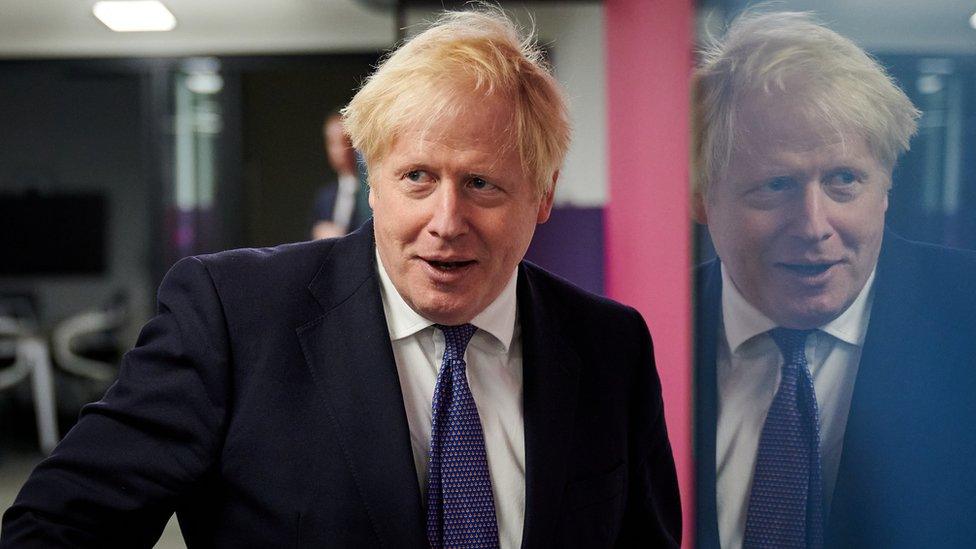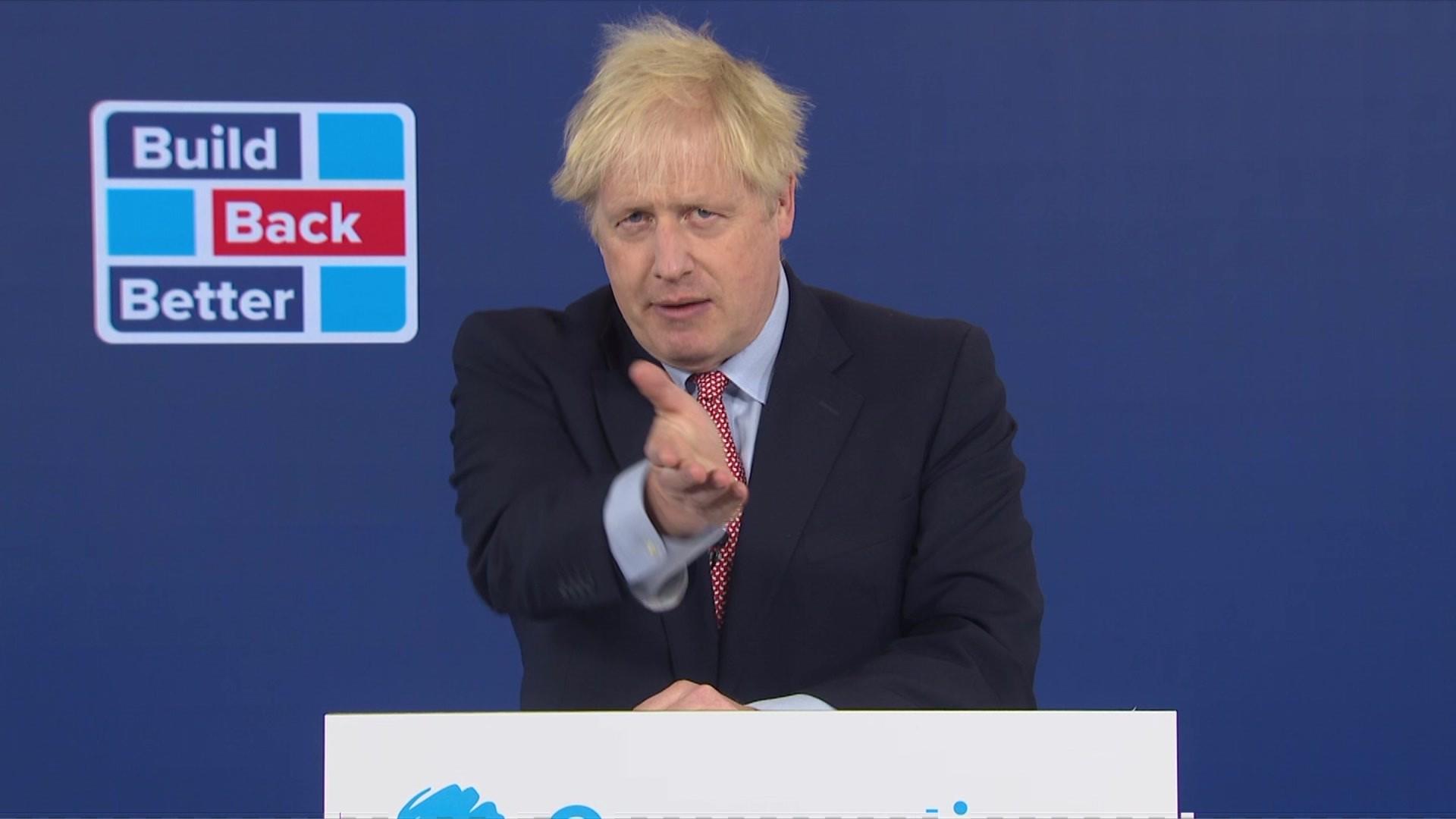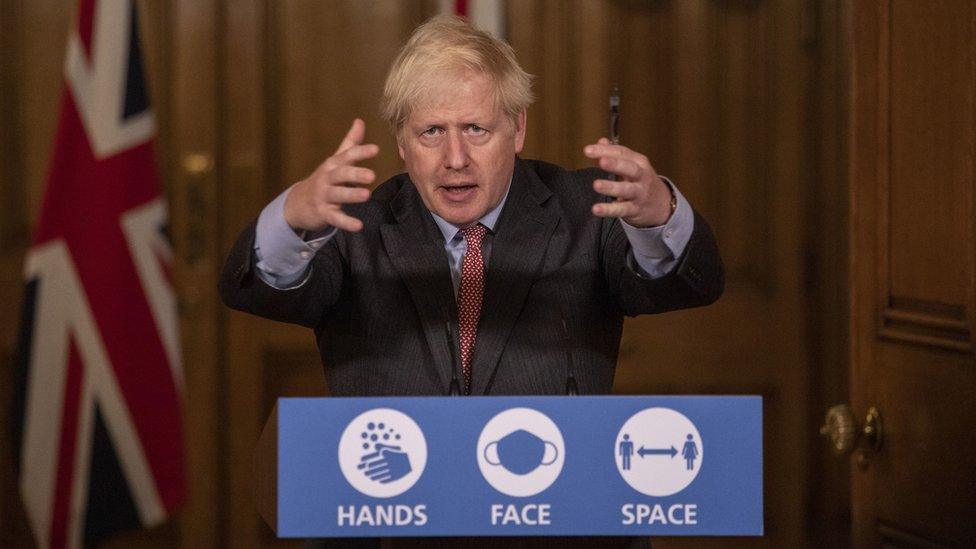Coronavirus: How the PM's lockdown decisions were shaped
- Published

"Save lives, protect the NHS and shelter the economy."
If you were paying close attention at the end of September when the prime minister made his latest announcements about the limits on our lives, you'd have spotted the change in the slogan, as we reported here.
It was obvious then that the government was trying to grapple, not just with the threat to health, but with the very real prospect of spreading economic misery caused by the initial lockdown earlier this year - and the reality that any new restrictions will cause further harm.
At that point on the 22 September, we had already revealed a few days earlier that the government's scientific committee, Sage, had put forward the idea of a short, sharp lockdown, the so-called "circuit break".
What we now know is the influential committee had directly recommended ministers take that action the day before.
Reading the Sage minutes in black and white, the split between their proposals and the prime minister's eventual decision seems to portray a dramatic sudden split.
It is no surprise, however, the situation is more complicated than that.
First off, despite the political rhetoric at the start of the pandemic, there has never been such a thing as "the" science.
Sage is one important part of the government machine, but among its members there have long been arguments and disagreements before they "grind out a consensus", as it was memorably described.
And indeed, some of its members have spoken out frequently over a period of many months.
You'll remember initial concerns that the government and its chief advisers weren't acting fast enough to lock down in the middle of March.
And the discussions about the testing regime being advanced enough in May.
And other members of Sage warning that the country was still on a "knife edge" when the restrictions started to be rolled back.
'Political environment'
The difference between the Sage consensus, however, and the government's decision at the end of last month is now fully on display.
It's the political environment, and the difference of opinion inside government, that has developed too.
At the same time, in the third week of September, there were senior figures inside government arguing for further action, believing that to watch and wait might be a mistake.
But Boris Johnson's decisions were ultimately shaped more strongly by reluctance, not just from the chancellor, but a strong push back from the Tory backbenches, and a fear of public fatigue too.
Don't forget either that the PM himself "hates" having to impose any kind of limits on people's lives, according to one of his team, and recently he's been at pains to point this out too - describing himself on several occasions recently as a "freedom-loving Tory".
The prime minister still wants to do everything he can to avoid another national lockdown.
But depending how bad things get in the next few weeks, the revelations in the Sage documents could leave him open to the same accusation levelled at him first time round - that ministers did too little, and too late.
- Published6 October 2020

- Published2 October 2020

